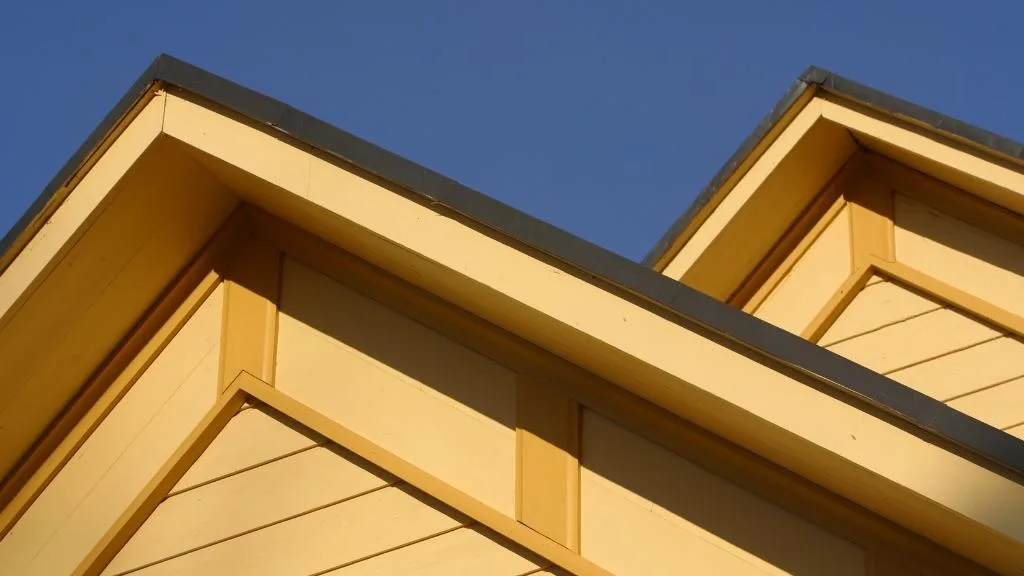
Most roofing contractors will just walk onto a roof and take a quick glance at the slope. This is not an accurate way to measure the pitch of your roof.
The best way to calculate your roof pitch angles is with a digital level.
The digital level will allow you to set the roof pitch on a scale divided in half degrees. This should be done at the highest point of the roof and also at where any valleys would be located.
What is a Roof Pitch Angle?
A roof pitch angle is the angle that the roof makes with a horizontal surface. Roof pitch angles are measured using a common six-step method, expressed in a ratio of 6:12 for steep roofs and 3:12 for low slope roofs.
Knowing your roof’s pitch will allow you to choose the correct type of shingles for your home.
A steep pitch needs a shingle that is long enough to cover the length of each roofing rafter. A lower pitched roof can accommodate most any type of shingle.
Measuring the roof pitch angles with a digital level allows one to determine how much work it will take to install an asphalt or fiberglass shingle on your home and sheds.
If the roof pitch angle is too steep, it might be wise to choose a different type of roofing material or to hire a professional.
It is critical to understand your roof’s pitch and slope before going any further. There are certain ways of how water damage flows into the roof.
Understanding how it does so may assist you choose the right materials for your roofing or shingles for your home. You must then understand how to calculate your roof pitch angles with no headaches at all.
Key Terms in Measuring Your Roof Pitch
Before we proceed, there are key terms that you must understand and some measurements you must learn.
1. The Rise and Run – The vertical distance from one point to the highest point of the roofing is known as rise.
When you examine a right angle, you’ll see the vertical component as the rise and then the horizontal component as the run.
The length of your roof, commonly known as the height, is measured in feet.
The distance between your roof’s peak and the exterior wall is referred to as run.
2. Roof Angles – Roofs come in many different varieties, and depending on your type of roof you’ll have a slope ratio or pitch fraction that’s unique to the condition.
3. Roof Slope – Roof slope is often mistaken for pitch and it is critical to distinguish the significant distinction.
Slope is the slope of the roof itself and is measured in inches of vertical rise per foot of horizontal length.
A roof then with a 3-inch rise for every 18 inches of run would appear like: 3:18. The measurement will always be represented in terms of inches per foot.
4. The Roof Pitch – The slope of a roof is referred to as pitch, and it is measured in a fractional ratio of the rise divided by the span, that identifies the distance between exterior walls.
A roof with a 3-foot rise and a 24-foot span would be a 1/8 pitch of the roof.
How to Calculate Your Roof Pitch Angle
So now, let’s talk about how to calculate your roof pitch:
Access a rafter. The most dependable technique to determine slope is to start at the bottom of the roof and measure up.
This is actually the most accurate method because roofing materials aren’t designed for uneven surfaces. A rafter in the attic should give you a good measurement. The overhang of one at the end, or gable edge will also do nicely for that too!
Place a level against the underside of your rafter and adjust it until you can see two lines in close proximity. This will indicate that there is an even keel across all four corners, which means everything should be square!
If there are two different terrains, it may be helpful to mark them with chalk lines.
You can’t measure a level if it doesn’t have inch markings, so find the 12-inch mark and make your marking with a chalk or crayon! This is an important step in making sure everything looks perfect.
Level to rafter measurement. Extend your tape measure perpendicular from the level and make sure that it stays in place while measuring between 12″ marks on each side of a given beam or joist, up towards the peak.
This will be the measurement of your pitch’s rise, which is also how you can measure for metal roofs or shingling!
Finally, getting the slope of your roof is easy to find. Simply measure the vertical distance (rise) and horizontal run, then divide them by each other for a ratio that will give you an idea about what type or steepness this particular pitch may be on your roofing project.
The Importance of Roof Pitch Angles
You may be wondering why it’s so important to calculate your roof pitch angles. Well, a lot of it has to do with the quality of your home and its resale value.
It’s also possible that you could save money on utility bills if you have a more efficient roof, which is all influenced by pitch angles!
It is much harder to install a new roof on a home that has a low pitch, but with the proper equipment and time you may be able to accomplish it.
In addition, if your roof is too steep for you, then there’s no way that you’ll be able to do it without professional help!
Jumping into installing a new roof without calculating the roof pitch angle first can end up causing more headache and money.
If you’re worried about making mistakes and doing it wrong, then hire a roofing contractor to do the work for you.
Hopefully, we’ve helped you learn some basics about your roof pitch angles and how to calculate what kind of slope or rise that you have!
This will be an important step in applying any roofing or shingles that you house.
Having a good understanding of what your roof pitch is will help you maintain your home and make it more efficient.
It can also help to add value to the property if you ever consider selling if you are in the buy and well business.


